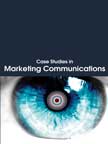Marketing Management
 |
Details
Textbook:
Pages : 500;
Paperback;
210 X 275 mm approx.
Workbook:
Pages :
282; Paperback;
210 X 275 mm approx, Sample Applied Theory Questions
Pricing
Textbook Price: Rs. 900;
Workbook Price: Rs. 700;
Available only in INDIA
Buy Now
Please allow 5 to 10 days for delivery.
Detail Table of Contents
Communication Mix in Marketing : Chapter 19
SUMMARY: Marketing is a societal process and communication plays a major role in marketing. Communication is the process of interaction between the sender (the source of the information) and the receiver (the destination of the information) through a medium. Communication carries immense significance in one’s social life. There are several steps in the communication process. The sender sends information in a coded format through a medium. This information is received and decoded by the receiver. The communication process is said to be complete if it does not involve any noise. Once the receiver receives the message, he gives a feedback, which enables the sender to further the communication process. Communication tools like advertising, sales promotion, public relations, personal selling and direct marketing are used in marketing. |
|
Promotional tools have to be carefully selected by the marketing department so that they help maximize sales. The marketer must first identify the audience to which he intends to communicate. Identifying the product's stage in its life cycle is important to effectively communicate with the target audience.
Setting the objectives of a communication program is essential for its success. Objectives can depend on awareness, knowledge, liking, preference, conviction, and purchase. Companies follow objective and task method, competitive parity method, percentage of sales method, or affordable method to allocate the budget for marketing communications.
The factors influencing designing of the communication message are the message content, message structure, message format and message source. The communication channels are classified into personal and nonpersonal channels. Consumer markets and industrial markets are the product market types available. A company chooses push or pull strategy depending on the type of products it is marketing.
Companies vying for maximum response to their communication processes should focus on coordination and integration of the marketing communication process.



